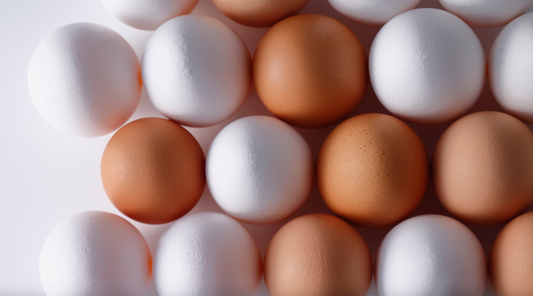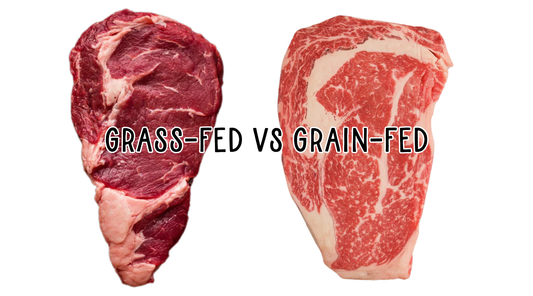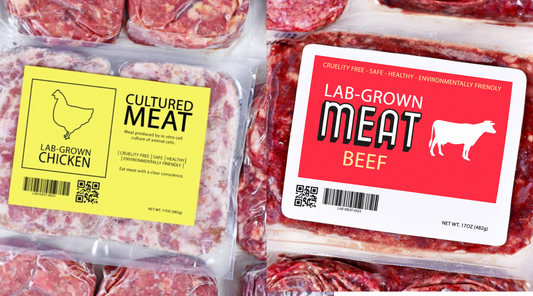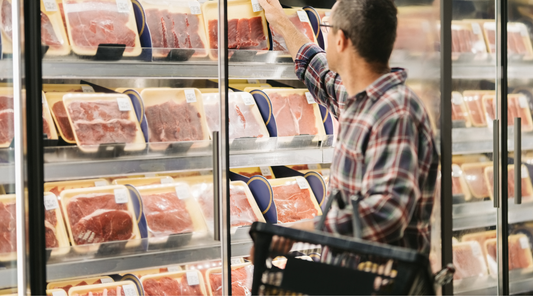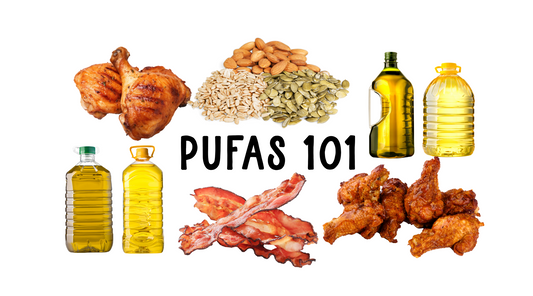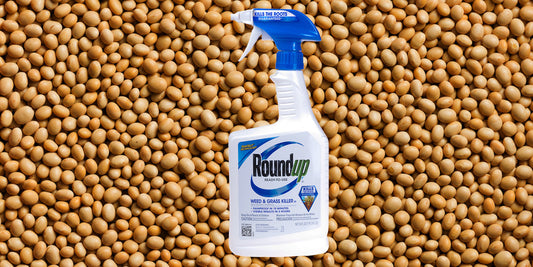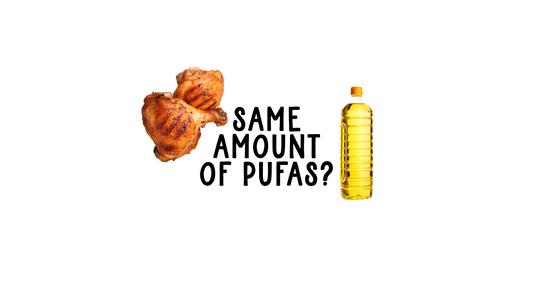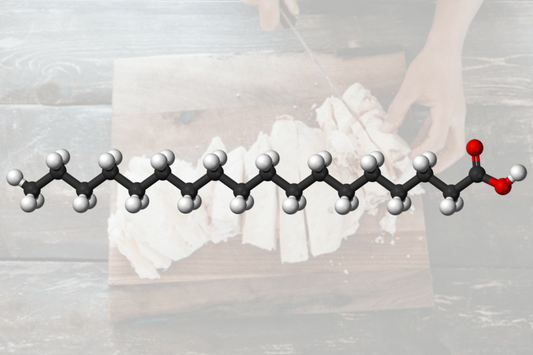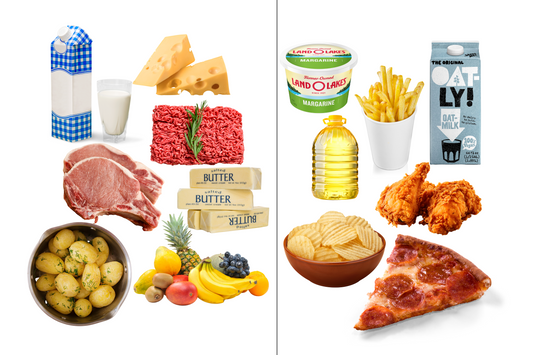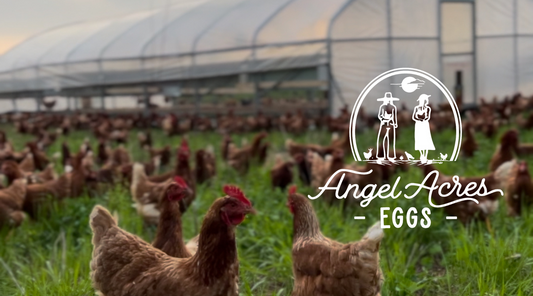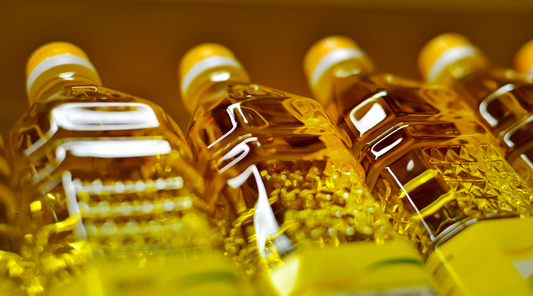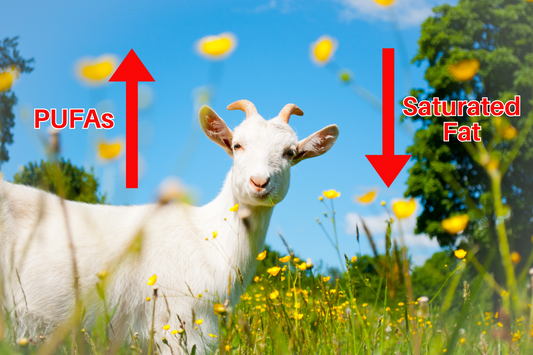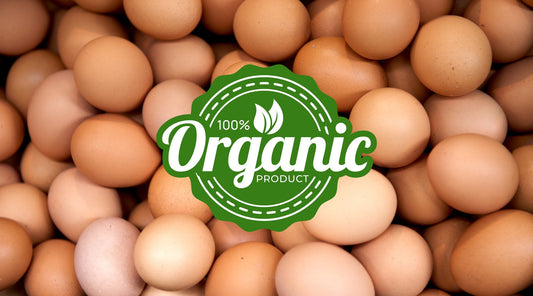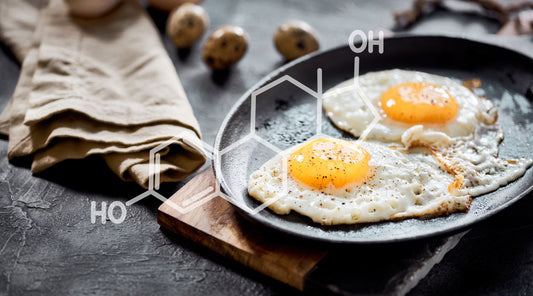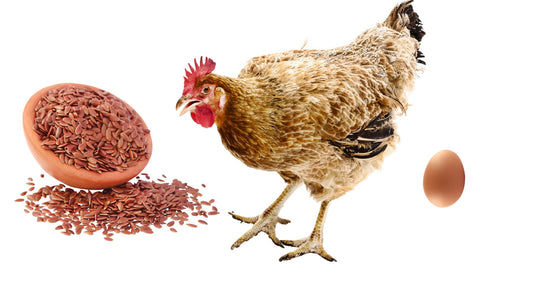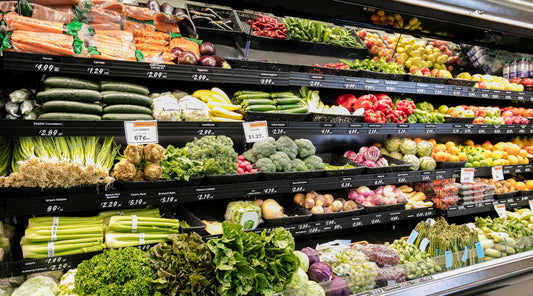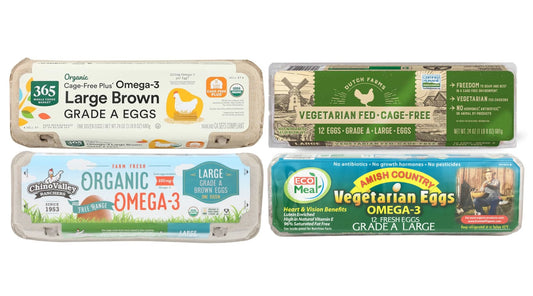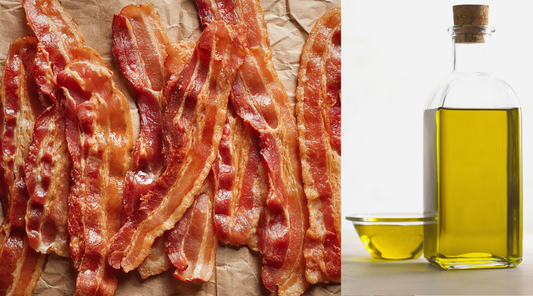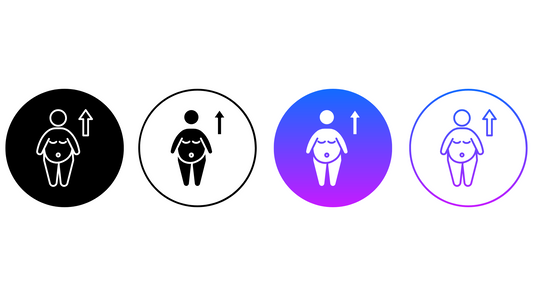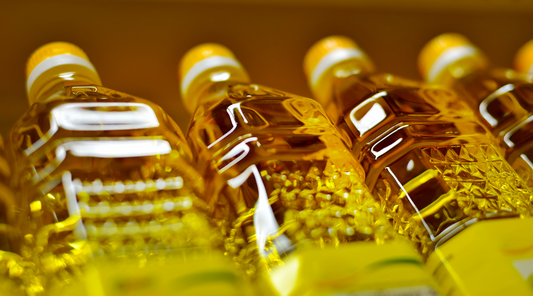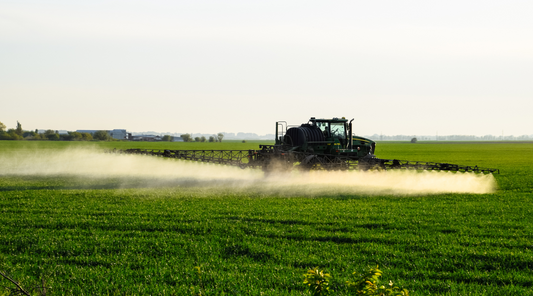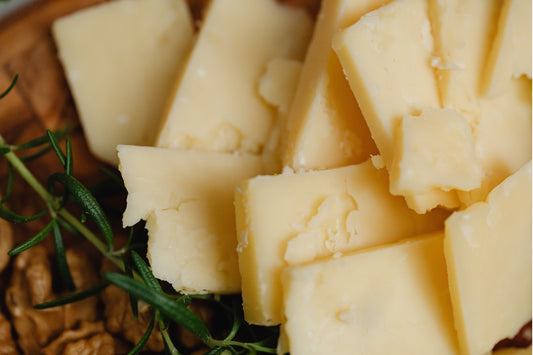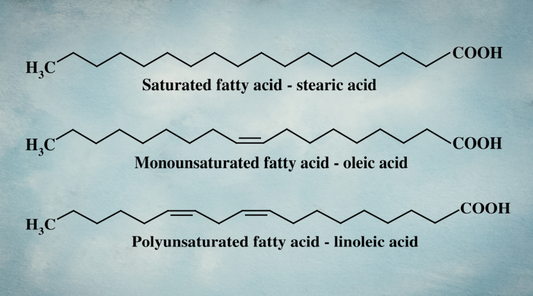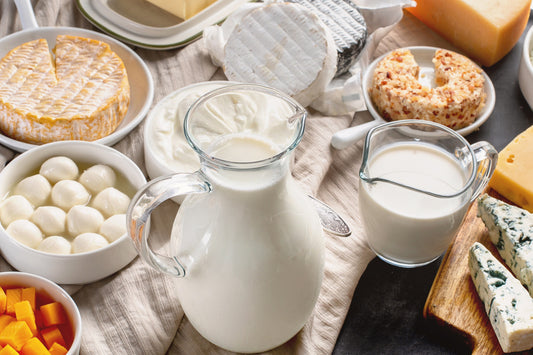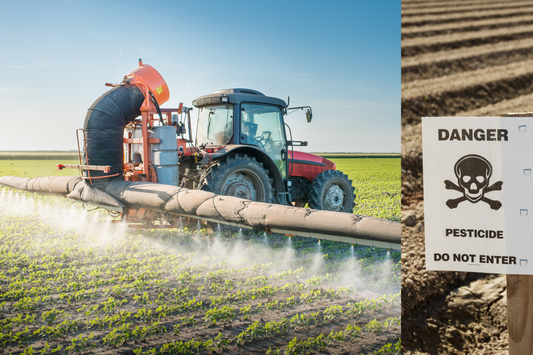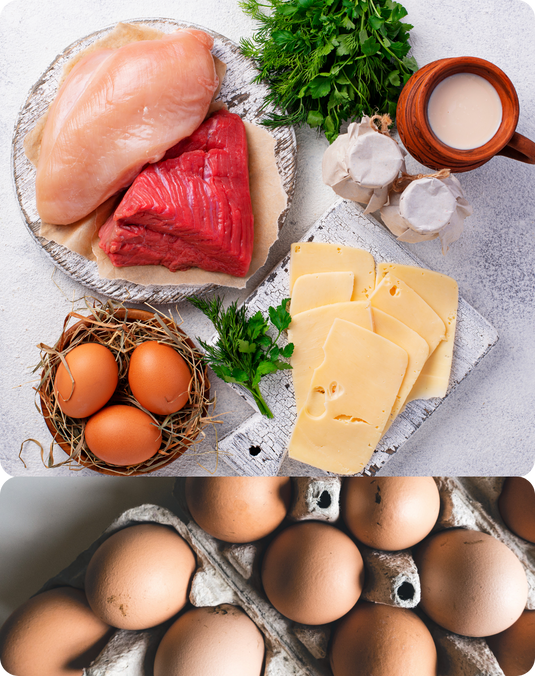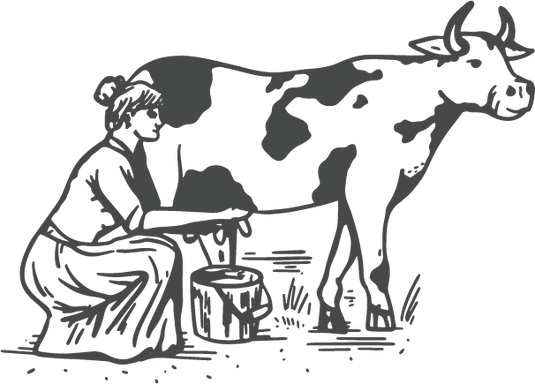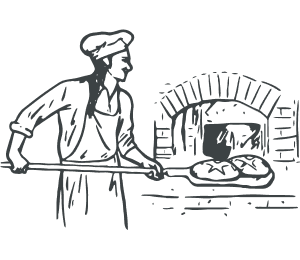
Genetically Modified Ingredients in Most US Cheeses
In this article let’s dive into why I believe you should only be eating cheese made with ANIMAL RENNET, and how over 90% of the cheese sold in the US does not use this and instead uses a genetically modified version made by Pfizer.
Outline:
- Cheese history
- Types of rennet used in cheese making
- Safety concerns of genetically modified enzymes
- Our cheeses
CHEESE HISTORY
Who doesn't love cheese?! And for good reason - it is not only delicious but also incredibly nutritious.
And despite what mainstream tells us, humans have been making and consuming this superfood for over 7000 years. 1, 2, 3 In fact, cheese serves an important role in human history.
Historians document that milk, dairy and fermented dairy products, like cheese, served as a nutrient-dense calorie source that was storable, allowing some of the first explorers to safely travel and expand communities, creating more demographic shifts and diverse farming communities. 4
But cheese was traditionally made with just these 4 ingredients.
- Milk
- Salt
- Starter Culture, what’s used to make the desired cheese strain (for ex, muenster versus swiss)
- Animal Rennet, used as a clotting agent to curdle the milk into cheese, separating the liquid parts of milk from the solids - a very vital part of the cheese making process!
You add culture to milk and let it ferment. Then, you add rennet, which separates the milk into curds and whey. Then you press the curds and age them. And voila - cheese!
Rennet is a complex set of enzymes that are naturally produced in the stomachs of ruminant animals, like cows. The main enzyme present is Chymosin, which is a protease enzyme, meaning it breaks down protein. Rennet from animals also contains other enzymes like pepsin and lipase.
So these enzymes in rennet target casein, the main protein in milk. They cause the casein molecules to divide and re-coagulate into even larger clumps, forming cheese curds.
So, rennet serves as a vital part of cheesemaking since it helps curdle the milk into cheese, separating the liquid part from the solid part.
TYPES OF RENNET
There are four types of rennet used in the cheese making industry: animal rennet, vegetable rennet, microbial rennet, and FPC (a GMO version).
1.Animal Rennet
Animal rennet is the most natural and oldest form of rennet, and what was traditionally used in cheese making. There are milk-clotting enzymes naturally occurring in the stomach lining of ruminant animals.
It is well known in the cheese making industry that animal rennet produces a superior flavor, likely because this rennet is a complex set of enzymes (as nature intended), rather than a single isolated enzyme derived in a lab.
Animal rennet is usually 90% chymosin enzyme and 10% pepsin enzyme. The small amount of pepsin will break down the casein protein in milk in a slightly different way compared to just chymosin alone, producing a final product with an enhanced taste.
Cheese made using animal rennet not only tastes better, but it also produces a safer and more natural final cheese product, which will be discussed in depth below.
2. Vegetable Rennet
One alternative to animal rennet is vegetable rennet, which unfortunately varies a lot depending on the source, and the term ‘vegetable rennet’ is misused a lot.
True vegetable rennet is derived from plants that possess coagulation enzymes. And these plant extracts have been used as milk coagulants since ancient times. Some examples include cardoon thistle, fig tree bark, or nettles.
However, it is well known in the cheese industry that vegetable rennet can negatively impact the final texture and flavor of the cheese. 5, 6, 7, 8
“Most plant-derived [enzymes] typically exhibit low MCA/PA ratios resulting in poor cheese yield and formation of bitter substances during cheese ripening…Therefore, most of them are not suitable for cheese production” 9
Which is why most of the cheese with the label ‘vegetable rennet’ isn’t real vegetable rennet… it's either microbial rennet (made from mold) or FPC (the GMO version) since there is no regulation on the terms used for what rennet is used in cheese labeling.
2. Microbial Rennet
Another alternative to animal rennet is ‘microbial rennet’, where the coagulating enzymes are produced by a specific type of mold, fungus or yeast organism grown and fermented in a lab setting (often fed soy). Yum. So while the microorganisms aren’t genetically modified, their food source likely is.
This is considered vegetarian friendly as the enzyme produced by the organism is not derived from an animal.
There is again a large consensus in the cheesemaking world that cheeses made with this type of microbial rennet can lead to a final cheese product with a bitter taste.
“Microbial [enzymes] are mainly produced by fungi and bacteria in the process of growth and metabolism. Microorganisms have the advantages of a short growth cycle, easy fermentation, and are not limited by space and region of production…Therefore, the cost of microbial MCEs is low. ...However, it is found that most MCEs [microbial enzymes] have high PA and low MCA/PA ratios leading to low cheese yield and bitterness.” 10
This option is commonly used in ‘certified organic’ and ‘certified vegetarian’ cheeses.
3. Genetically Modified FPC
To overcome some of the shortcomings of the vegetable and microbial rennets like the potential bitter cheese taste, scientists have leveraged genetic engineering technology to create new, genetically modified species that generate these milk-curdling enzymes.
Introducing the most common alternative to animal rennet in cheese making - FPC, which stands for Fermentation-Produced Chymosin (FPC). (Chymosin referring to the enzyme that curdles milk, and is naturally present in the stomach lining of ruminant animals).
In fact, 90% of the cheese manufactured in the US uses these enzymes from genetically modified organisms. 11
FPC was created by the one and only Pfizer (biotech company) and is made possible by using CRISPR gene editing technology 12 where the genomes of living organisms are modified. The ‘safety’ of FPC was evaluated by a 90 day trial in rats. 13
Here’s how it is made:
The rennet producing gene is taken out of the animal cell’s DNA string and then inserted into the bacteria, yeast or mold host cell’s DNA string in a process known as gene splicing (a type of recombinant DNA technology). Once inserted, the newly placed gene initiates the production of the chymosin enzyme within the host. The host culture is then cultivated and fermented.
These recombinant DNA technologies are relatively new and became popular in the 1980s when the US Supreme Court by a 5-4 vote ruled that new life forms can be patented. 14
So then in 1990, in another precedent-setting decision by a U.S. government office, the FDA approved the use of FPC in food. It was the first time a bioengineered product was permitted in food in the U.S.!
It gets better.
This bioengineered chymosin (FPC) was granted Generally Regarded as Safe (GRAS) status. Meaning, Pfizer was exempt from the pre approval requirements that apply to other (non GRAS) new food additives. Since Pfizer demonstrated what is often referred to as “substantial equivalence”, the FDA concluded that bioengineered chymosin was substantially equivalent to calf rennet and needed neither special labeling nor indication of its source or method of production.
In case you didn’t know, this ‘GRAS’ label is a little hand wavy and just a big loophole…
In general, federal law requires the FDA to ensure that food additives are safe and mandates a rigorous pre-market safety review process.
But the loophole = GRAS.
43% of food additives are designated ‘GRAS’ and don't get FDA oversight. Essentially, we must trust that food companies will conduct unbiased safety determinations before adding these new GRAS substances to our food.
“According to the FDC Act, food additives that are non-GRAS need approval prior to marketing. In contrast, GRAS substances do not require approval or notification to the USFDA prior to marketing.” 15
Meaning the public and other regulatory agencies lack the data needed to assess the safety of some chemicals in our foods.
In 2014, Former Deputy FDA Commissioner for Foods Michael Taylor commented on FDA’s failure to regulate food chemicals, saying: “We simply do not have the information to vouch for the safety of many of these chemicals.”
GRAS may have started out with good intentions, but it has turned out to be a giant loophole for food companies to get a free pass to use chemical additives in our food with little to no oversight. And of course, there is no other developed country in the world that has a system as archaic as GRAS for approving food additives.
Okay tangent aside, back to FPC.
Even though the organisms that produce this FPC are genetically modified, dairy products using this technology are exempt from having to label their products as ‘GMO’.
In fact, FPC is just listed as ‘microbial rennet’ or ‘vegetable rennet’ on labels. (The source of the rennet is not required to be listed). So it is a little deceiving.
The ‘Non-GMO’ national project does not agree with this FPC technology and believes this is a high risk ingredient.
Moreover, FPC is not permitted in USDA Organic cheeses.
And here is a comment from the American Cheese Society - “FPC rennet is a genetically modified organism (GMO). According to the culture companies, 90% of North American cheese is made with FPC rennet. But ingredient labels do not distinguish between this type of microbial rennet and the original non-GMO type. And the fact that use of FPC-type microbial rennet is not labeled a GMO leaves those who oppose GMOs in the dark when it comes to choosing cheese.”
And once again, FPC is used in 90% of the cheese made in the US!
These alternative rennet methods are up to 2X cheaper than using animal rennet, since it speeds up the aging process to make cheese ready for market faster, which means more profits.
They also allows cheese companies to market to vegetarians (since animal rennet, derived from the stomach of a ruminant animal, would not be allowed).
But is FPC safe?
SAFETY CONCERNS OF GM ENZYMES
Well, again, this technology is new. So there are no long term studies evaluating the safety of eating a small amount of this genetically modified food additive every single day. 16
But there are two main concerns: 1) toxicity and 2) digestive issues since these rennet alternatives can serve as an allergen. 17
- Toxicity
Toxicity meaning that the enzyme solution contains bio toxins from the genetically modified host (mold or fungus) that is being cultured and fermented in the lab.
The producers of these enzymes claim the final FPC enzyme solution is highly purified, but some people react as though they still contain some of the allergens from the host microorganisms themselves.
In fact, traces of the genetically engineered bacteria have been found in enzymes. 18
A few quotes from the literature regarding these toxicity concerns. I don’t know about you, but I have no desire to consume bio toxins from genetically modified organisms!!
“Genetically modified food enzymes are currently produced from GMOs. Safety concerns have been raised regarding potential contamination of food with bacterial toxins or mycotoxins, allergens, or uncharacterized extraneous substances as impurities.” 19
“Because these enzymes are purified from microbial sources, toxic substances might be present in enzyme preparations/isolates. The toxic substances are basically bacterial toxins and mycotoxins, which might cause problems/risks related to the health of consumers. Safety legislation is also very much attentive regarding the allergenic properties of manufactured enzymes, as it is well known that enzymes are potent inhalative sensitizers. Apart from that, numerous uncharacterized extraneous substances/ impurities of microbial/biological origin may also be present in the enzyme preparation, which is also a matter of prime concern while evaluating the safety of commercial enzyme products.” 20
“While food enzyme preparations are considered unlikely to cause any acute toxicity, genotoxicity, or repeat-dose oral toxicity, it is the fermentation product(s) of microorganisms from the manufacturing process that is/are of interest due to the potential presence of secondary metabolites that may induce toxicity when ingested (eg. aflatoxins, fumonisins and/or ochratoxins).” 21
So, some are concerned about continuous ingestion of these bio toxins over time, and the negative health consequences those would have over the course of years.
And unfortunately, there isn’t much regulation here.
“Currently, the companies themselves are responsible for the quality control of their products.” 22
Gee, that’s not helpful!
2. Allergens and digestive issues
So as a result of a small amount of these toxins potentially showing up in the final cheese product (and slight structural changes in the final proteins), the cheese can now serve as an allergen and can cause an allergic reaction, or digestive and respiratory issues. 23
- Stomach upset or discomfort
- Runny nose, increase in mucus production
Consumers then may think they can’t digest cheese - but hey, maybe it is just the cheese that was made!
It may not be the dairy itself, but the microorganism residues that elicit an allergic response, or irritate the gut lining.
I personally do not digest cheese that is made with this FPC (which again can be ‘vegetable rennet’ or ‘microbial rennet’ on labels). I get stomach upset and a disruption of my normal bowel movements. So something isn’t going right there! I can only digest cheese made with animal rennet, so I am very picky with what cheese I consume day to day!
One of the biggest issues here is the potential disruption of the gut microbiome.
“Lastly, the case study highlights the issues related to the dissemination of [antimicrobial resistance] genes due to their potential acquisition by the human commensal flora, via direct food consumption and by environmental bacteria through contact with soil and water surfaces or food waste [75]. This is especially the case as a living GMM [genetically modified micro-organism] was found in a FE [enzyme] preparation [71].” 24
In addition, allergic responses from ingesting the biotoxin residues or modified protein structures.
“A known safety risk linked to industrial enzyme use is respiratory allergy and for most proteases there is also some potential for skin and eye irritation… Enzymes present a risk of a respiratory allergy (e.g. Aspergillus-derived enzymes in bakers’ asthma) and it is well described in the scientific literature…” 25
“Genetic modification of enzymes may also change their allergenic properties, posing new potential health risks. For instance, type I sensitization was found in a study of 813 exposed industrial workers using genetically modified enzymes [46].” 26
So, it is documented in the literature, I experience it personally, and have heard from multiple other people - some people have digestive issues digesting the microbial and vegetable rennets. But do just fine with cheese made in a traditional manner with animal rennet.
There are consequences when we try to outsmart nature!!!
OUR CHEESE
So, if you have previously had digestive issues or allergy-like reactions to cheese, the type of rennet may have been the issue, not the dairy itself!
KNOW YOUR DAIRY!
Our cheese at Nourish Cooperative is not only made with raw, A2A2 milk, but we ONLY use animal rennet in all of our cheese varieties - leading to easier to digest, NON GENETICALLY MODIFIED, nourishing and delicious cheese.
We prefer that cheese is made the traditional way, as nature intended.
So if you don’t digest other cheeses well, you can likely digest ours just fine!
KNOW YOUR FARMER AND KNOW YOUR CHEESE INGREDIENTS!





